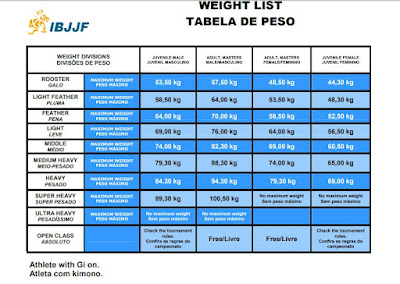About the blue belt requirements in brazilian jiu jitsu
The blue belt is considered by many great masters of brazilian jiu jitsu the foundation for all the evolution up to the black belt.
Rickson Gracie for example has commented:
“What the athlete lacks after the blue belt is practice and reflexes. He has everything he needs to be a black belt, he just lacks consistency.”
That is why most of the academies and teams that have proposed a system of requirements to access the blue belt have included a large number of techniques and aspects that seem like a world to anyone who is starting out.
It is true that whatever this system of requirements is, a practitioner of Brazilian jiu jitsu must acquire very important basic knowledge and skills in the different areas of the game.
You will need to learn basic movements, transitions, and develop muscle tone, stamina, as well as improve weight distribution and control.
You will need to acquire knowledge and techniques of self-defense and to fight on your feet, pull and pass the guard, as well as defend and escape or execute some basic submissions.
Taking this into acccount, the blue belt takes much more time in Brazilian jiu jitsu than in the first belt of other disciplines.
In the case of our team we have developed a program that requires the acquisition of important foundations in three main areas:
Theoretical knowledge area:
In this area we ask our students for general knowledge about the history of Brazilian Jiu Jitsu and what differentiates it from other disciplines like sambo, wrestling and judo.
Area of concepts, principles and techniques:
In this area we expect the student to have developed muscle tone, resistance and survival to pressure, weight and control of opponents.
Secondly, we check that a series of basic movements have been acquired ( hip escape, bridges, technical lift, fall breaking among others)
These movements are the foundation for learning most of the Brazilian jiu jitsu techniques.
We also work on the development of concepts and techniques for sports jiu jitsu and jiu jitsu as self defense.
Above all, we place a lot of emphasis on the skills to perform correct defense of positions and submissions as well as the skills to execute positional control and fundamental transitions for both sports jiu jitsu and self defense situations.
Area of attitudes:
At this point we hope that the student has given jiu jitsu an important place in his life, this does not mean that he does not miss classes for various reasons, but from our point of view, a blue belt is someone who is already sure that he likes jiu jitsu and wants to keep learning.
On the other hand, the blue belt must take a first step in what we all consider the conquest of ego and pride.
Typically, as soon as a white belt wins the blue belt, it becomes an immediate target for the other white belts and then it begins to seem essential to defend the new belt at all costs.
Although it is true that a blue belt should be able to regularly beat the white belts of his team, this does not mean that he does not lose or that he does not take risks to continue improving his defense and escapes.
Finally with regards to the learning attitude we also expect that a blue belt has understood that his progress is related mainly to the focus and smart training he is able to do and not only with the sparring time or the belief that only trainig with more advanced partners is the only way to improve.
So we expect that :
- He or she has began to define his game
- He has chosen techniques combinations in each relevant area
- He has began working in these techniques during the class or free training
- And that he is able to take advantage of every training adapting the sparring to take the best impact on his progress.
That means always looking for challenge putting him self in disadvantageous positions and do a lot of focused and positional sparring.
He will also should have understood that all positions and techniques are good in brazilian jiu jitsu and that their effectiveness depends upon the work you do to be good at them (that means specific focused training on these tecniques during the needed time).
Letting go the idea of improving just by learning the new apparently super technique is very important to take a more solid attitude towards learning and the necessary mindset for continue improving.
The extent to which a blue belt has gone through this mindset change will greatly determine the chances of him quitting or not.
Thats why we take this aspect into consideration and we have found that is what differentiates those blue belts that continue the journey with the others that quit.
So check your technical progression and if you have learned the fundamentals, but also check your vision and mindset about which are the next steps and the way you will approach your learning and training after getting the blue belt.
Hoping this notes help you in your progress and eager to receive comments or questions.
Thanks in advance for sharing this article with friends and other people that may find it interesting clicking the share button in the top right corner of the article
And don´t forget to visit other resources that we hope that can help you in your bjj journey.


Comments
Post a Comment